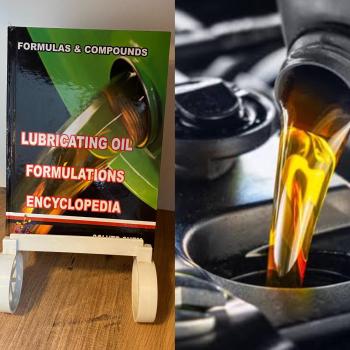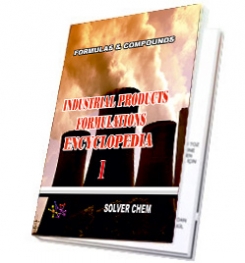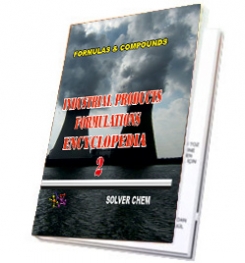
In most slow, highly loaded, geared applications, there exists a lubricating condition that is typical for most failures due to adhesive wear. This condition is known as a boundary condition. In a boundary condition, there is no separation of the interacting surfaces. The function of an extreme pressure (EP) additive is to prevent this adhesive wear and protect the components when the lubricating oil can no longer provide the necessary film thickness.
How It Works
EP additives are polar molecules. Imagine a molecule having a head and a tail. The head of the molecule is attracted to the metal surface, while the tail is compatible with the lubricant carrier (oiliofilic). As the conditions under which metal-to metal interactions become more severe due to higher temperatures and pressures (greater loads), the lubricant film becomes more stressed. The distance between the metal surfaces has decreased to the point where rubbing is occurring and welding (adhesion) becomes highly likely.
Traditional boundary lubrication additives do not remain on the metal surface and cannot prevent the increasing friction, wear and damage to the machinery seen under these conditions. Extreme pressure additives are required in order to enable the specific application operating under these conditions to continue.
There are two main types of EP additives, those that are temperature-dependent, and those that are not. The most common temperature-dependent types include boron, chlorine, phosphorus and sulfur. They are activated by reacting with the metal surface when the temperatures are elevated due to the extreme pressure. The chemical reaction between the additive and metal surface is driven by the heat produced from friction.
Much like when you rub your hands together, as the metal surfaces come in contact with one another, there is heat generated by means of friction and pressure. In reacting with the metal surface, these additive types form new compounds such as iron chlorides, iron phosphides and iron sulfides (dependent upon which compound is used). The metal salts produce a chemical (soap-like) film that acts as a barrier to reduce friction, wear and metal scoring, and eliminate the possibility of welding.
The nontemperature-dependent, overbased sulfonate, operates by a different mechanism. It contains a colloidal carbonate salt dispersed within the sulfonate. During the interaction with iron, the colloidal carbonate forms a film that can act as a barrier between metal surfaces, much like the temperature-dependent; however, it does not need the elevated temperatures to start the reaction.

synthetic or semi synthetic
industrial gear oil
LUBRICATING OIL
FORMULATIONS
ENCYCLOPEDİA
is enough.
LUBRICATING OIL FORMULATION ENCYCLOPEDIA has many formulations of greases, complex grease, lithium grease production,sodium greases formula, formulation,multigrade engine oils manufacturing process,motor oils making, gear oil production, synthetic engine oils,semi synthetic motor oils,gasoline oils,diesel oils production process,composition of turbine oils,transmission oil manufacturing, production of cycle motor engine, tractor oils,mineral based motor engine production,heat transfer oils, slideway oils formulation, formulations, cutting oils formula,formulas grinding oils,mould oils manufacturing process and etc.
All lubricating oils in the encyclopedia are producible easily.You need no help and no technıcal support. The encyclopedia is enough to produce lubricating oils and engine oils itself.
LUBRICATING OIL
FORMULATIONS
ENCYCLOPEDIA
is written clear and understandable.


HARD BOOK E BOOK
RELATED TAGS: What is gear oil,how to make gear oils,industrial gear oils,making gear oils,synthetic gear oil making,production of gear oils,manufacturing process of industrial gear oil, types of gear oils,semi synthetic gear oil manufacturing,formulation of gear oils, formula,formulas, ingredients of industrial gear oils,synthetic industrial gear oil composition,compounds,using synthetic gear oils, standart of gear oils.
SOLVERCHEM PUBLICATIONS

|
|

|
|

|
|
